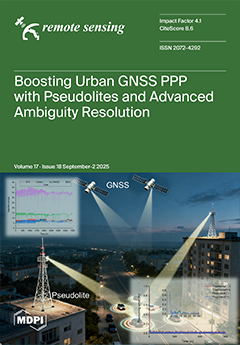In recent years, ozone (O
3) pollution has become a prominent air quality concern in the Sichuan Basin (SCB). Based on surface O
3 measurements from 22 cities between 2015 and 2024, this study investigates the evolution of extreme O
3 pollution
[...] Read more.
In recent years, ozone (O
3) pollution has become a prominent air quality concern in the Sichuan Basin (SCB). Based on surface O
3 measurements from 22 cities between 2015 and 2024, this study investigates the evolution of extreme O
3 pollution events and their underlying causes. While the average O
3 concentration, the number of affected cities, and the total O
3 pollution hours have all increased during the past decade, extreme O
3 concentrations have shown a significant decline since 2020. These trends suggest that O
3 pollution in the SCB has become more spatially extensive and less intense. Decomposition analysis attributed ~75% of the post-2020 decline in extreme O
3 concentrations to precursor emission reductions, with meteorological variability explaining the remaining ~25%. Satellite observations of formaldehyde (HCHO) and nitrogen dioxide (NO
2) column densities indicate a regional shift in O
3 formation regimes across the SCB, with many areas transitioning from VOC (volatile organic compound)-limited to transitional or NO
x (nitrogen oxide)-limited conditions. This shift likely contributed to the broader spatial extent and longer duration of O
3 pollution in recent years. Model sensitivity simulations and Integrated Reaction Rate (IRR) analysis demonstrate that reductions in precursor emissions, particularly NO
x, directly weakened daytime photochemical O
3 production and disrupted NO
x-driven radical propagation under transition and NO
x-limited conditions, collectively driving the observed decline in extreme O
3 concentrations.
Full article





